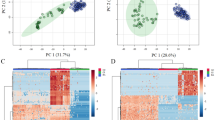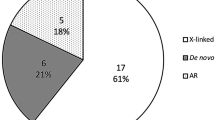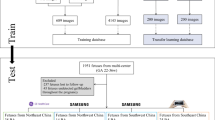Abstract
Background
Biliary atresia (BA) is a progressive, idiopathic, fibro-obliterative disease of the intra and extrahepatic biliary tree. If untreated, it results in severe liver injury and death. The etiology and pathogenesis of BA remain unclear. Few studies have investigated the association between maternal illness/drug use and the occurrence of BA in offspring.
Methods
We used the data from the Birth Certificate Application of Taiwan and linked to National Health Insurance Research Database and Taiwan Maternal and Child Health Database for the years 2004 to 2017 (N = 1,647,231) on 2022/03, and identified BA cases according to diagnosis and procedure code. A total of 285 BA cases were identified.
Results
Mothers with type 2 diabetes mellitus and non-dependent drug abuse had higher rates having BA children than non-BA children, with an odds ratio of 2.17 (95% confidence interval [CI] = 1.04–4.53) and OR: 3.02 (95% CI = 1.34–6.78), respectively.
Conclusion
These results support the notion that BA occurrence is related to maternal reasons. Further studies should be designed to identify additional maternal and pregnancy risk factors and to understand the underlying pathophysiology.
Impact
-
1.
The occurrence of offspring biliary atresia may be related to maternal illness/drug use.
-
2.
Maternal drug abuse and type 2 diabetes mellitus pose a high risk for offspring biliary atresia.
-
3.
If maternal etiology is found, biliary atresia might be a preventable disease.
Similar content being viewed by others
Log in or create a free account to read this content
Gain free access to this article, as well as selected content from this journal and more on nature.com
or
Data availability
The data underlying this study is from the National Health Insurance Research Database, which has been transferred to the Health and Welfare Data Science Center (HWDC). Requests for data can be sent as a formal proposal to the HWDC, Department of Statistics, Ministry of Health and Welfare, Taiwan (https://dep.mohw.gov.tw/DOS/cp-2516-3591-113.html) with an IRB approval for research purpose only. To access the data, please contact the HWDC (stsung@mohw.gov.tw; stpeicih@mohw.gov.tw).
References
Chardot, C. Biliary atresia. Orphanet. J. Rare. Dis. 1, 28 (2006).
Davenport, M., Muntean, A. & Hadzic, N. Biliary atresia: clinical phenotypes and aetiological heterogeneity. J. Clin. Med. 10, 5675 (2021).
Lin, Y. C. et al. Decreasing rate of biliary atresia in Taiwan: a survey, 2004-2009. Pediatrics 128, e530–e536 (2011).
McKiernan, P. J., Baker, A. J. & Kelly, D. A. The frequency and outcome of biliary atresia in the UK and Ireland. Lancet 355, 25–29 (2000).
Hopkins, P. C., Yazigi, N. & Nylund, C. M. Incidence of biliary atresia and timing of hepatoportoenterostomy in the United States. J. Pediatr. 187, 253–257 (2017).
Hadzić, N. et al. Long-term survival following Kasai portoenterostomy: is chronic liver disease inevitable? J. Pediatr. Gastroenterol. Nutr. 37, 430–433 (2003).
Hadžić, N. et al. Hepatocellular carcinoma in biliary atresia: King’s College Hospital experience. J. Pediatr. 159, 617–622.e1 (2011).
Fischler, B., Haglund, B. & Hjern, A. A population-based study on the incidence and possible pre- and perinatal etiologic risk factors of biliary atresia. J. Pediatr. 141, 217–222 (2002).
Petersen, C. & Davenport, M. Aetiology of biliary atresia: what is actually known? Orphanet. J. Rare. Dis. 29, 128 (2013).
Turmelle, Y. P. & Shepherd, R. W. Biliary atresia: a mostly preventable disease? J. Gastroenterol. Hepatol. 23, 3–4 (2008).
Safwan, M., Ramachandran, P., Vij, M., Shanmugam, N. & Rela, M. Impact of ductal plate malformation on survival with native liver in children with biliary atresia. Pediatr. Surg. Int. 31, 837–843 (2015).
Rauschenfels, S. et al. Incidence of hepatotropic viruses in biliary atresia. Eur. J. Pediatr. 168, 469–476 (2009).
Al-Masri, A. N. et al. Expression of the interferon-induced Mx proteins in biliary atresia. J. Pediatr. Surg. 41, 1139–1143 (2006).
Ortiz-Perez, A. et al. Innate immunity and pathogenesis of biliary atresia. Front. Immunol. 11, 329 (2020).
Asai, A., Miethke, A. & Bezerra, J. Pathogenesis of biliary atresia: defining biology to understand clinical phenotypes. Nat. Rev. Gastroenterol. Hepatol. 12, 342–352 (2015).
Mysore, K. R., Shneider, B. L. & Harpavat, S. Biliary atresia as a disease starting in utero: implications for treatment, diagnosis, and pathogenesis. J. Pediatr. Gastroenterol. Nutr. 69, 396–403 (2019).
National Center for Health and Welfare data analysis and application. Taipei (Taiwan): Ministry of Health and Welfare (2014). Available: www.mohw.gov.tw/cht/DOS/DM1.aspx?f_list_no=812 (accessed 2021 Apr 28).
Tang, C. H. et al. Preeclampsia-eclampsia and the risk of stroke among peripartum in Taiwan. Stroke 40, 1162e8 (2009).
Lin, C. M. et al. Validation of the Taiwan Birth Registry using obstetric records. J. Formos. Med. Assoc. 103, 297–301 (2004).
Sokol, R. J., Mack, C., Narkewicz, M. R. & Karrer, F. M. Pathogenesis and outcome of biliary atresia: current concepts. J. Pediatr. Gastroenterol. Nutr. 37, 4–21 (2003).
Tiao, M. M., Tsai, S. S., Kuo, H. W., Chen, C. L. & Yang, C. Y. Epidemiological features of biliary atresia in Taiwan, a national study 1996-2003. J. Gastroenterol. Hepatol. 23, 62–66 (2008).
Chiu, C. Y. et al. Biliary atresia in preterm infants in Taiwan: a nationwide survey. J. Pediatr. 163, 100–103.e1 (2013).
van Wessel, D. B. E. et al. Preterm infants with biliary atresia: a Nationwide Cohort Analysis From The Netherlands. J. Pediatr. Gastroenterol. Nutr. 65, 370–374 (2017).
Mills, J. L. Malformations in infants of diabetic mothers. Teratology 25:385-94. 1982. Birth. Defects Res. A. Clin. Mol. Teratol. 88, 769–778 (2010).
Davenport, M. Biliary atresia: From Australia to the zebrafish. J. Pediatr. Surg. 51, 200–205 (2016).
Harper, P., Plant, J. W. & Unger, D. B. Congenital biliary atresia and jaundice in lambs and calves. Aust. Vet. J. 67, 18–22 (1990).
Howley, M. M. et al. Asthma medication use and risk of birth defects: National Birth Defects Prevention Study, 1997-2011. J. Allergy Clin. Immunol. Pract. 8, 3490–3499.e9 (2020).
Bérard, A., Zhao, J. P. & Sheehy, O. Antidepressant use during pregnancy and the risk of major congenital malformations in a cohort of depressed pregnant women: an updated analysis of the Quebec Pregnancy Cohort. Bmj. Open. 12, e013372 (2017).
Sadler, T. W. Selective serotonin reuptake inhibitors (SSRIs) and heart defects: potential mechanisms for the observed associations. Reprod. Toxicol. 32, 484–489 (2011).
Sanchez-Valle, A. et al. Biliary atresia: epidemiology, genetics, clinical update, and public health perspective. Adv. Pediatr. 64, 285–305 (2017).
Jiang, J. et al. Epidemiological characteristics and risk factors of biliary atresia: a case-control study. Bmj. Open. 11, e049354 (2021).
Jimenez-Rivera, C., Jolin-Dahel, K. S., Fortinsky, K. J., Gozdyra, P. & Benchimol, E. I. International incidence and outcomes of biliary atresia. J. Pediatr. Gastroenterol. Nutr. 56, 344–354 (2013).
Acknowledgements
The authors would like to thank the Health Information and Epidemiology Laboratory (CLRPG6L0041) at Chiayi Chang Gung Memorial Hospital for their comments and assistance in the data analysis.
Funding
This study was supported in part by grants CFRPG6K0041 (J. M. Sheen) from Chiayi Chang Gung Memorial Hospital, Taiwan.
Author information
Authors and Affiliations
Contributions
C.C.M. and K.K.C. wrote the first draft of the manuscript. C.W.H., and S.C.H., reviewed and edited the subsequent drafts. L.C.P and C.K.J. performed formal analyses. Y.Y.H validated the statistical analyses. Y.J.B. and S.J.M. supervised and critically reviewed the manuscript. All authors approved the final version of the manuscript.
Corresponding authors
Ethics declarations
Patient consent
Because this was a secondary data analysis, all identifications of patients and institutions were removed before data release, so patient consent was not required.
Competing interests
The authors declare no competing interests.
Additional information
Publisher’s note Springer Nature remains neutral with regard to jurisdictional claims in published maps and institutional affiliations.
Supplementary Information
Rights and permissions
About this article
Cite this article
Chang, CM., Kuo, KC., Chen, WH. et al. Maternal risk factors associated with offspring biliary atresia: population-based study. Pediatr Res 93, 1064–1071 (2023). https://doi.org/10.1038/s41390-022-02166-w
Received:
Revised:
Accepted:
Published:
Issue date:
DOI: https://doi.org/10.1038/s41390-022-02166-w
This article is cited by
-
Biliary atresia
Nature Reviews Disease Primers (2024)



